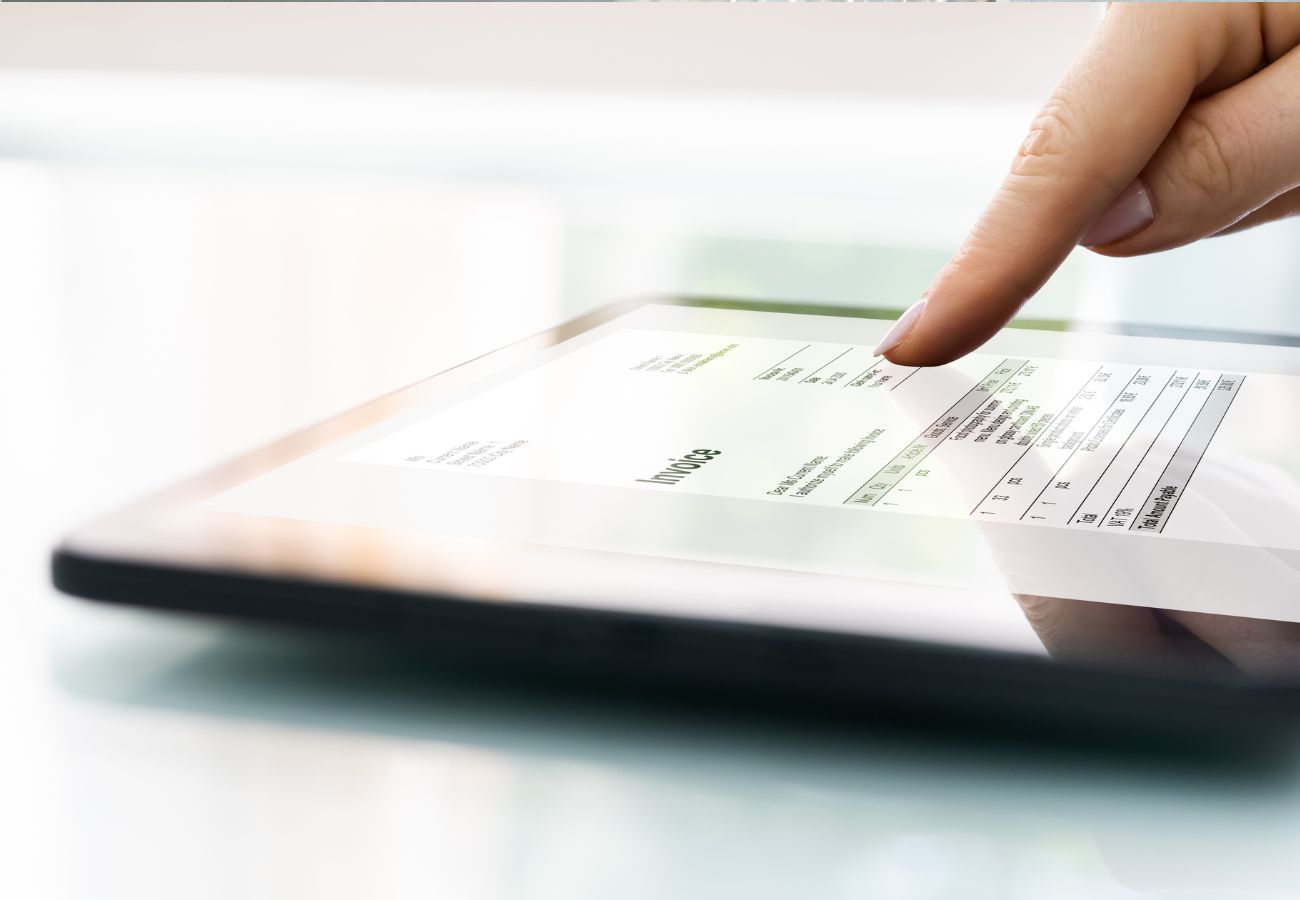Enjoy the Audio Version of the Article!
Effective management of supplier invoices in SAP is critical to the Accounts Payable flow, yet many companies face difficulties stemming from inefficiencies in the base SAP system that hinder daily operations. Manual processes, scattered information, and lack of transparency are key factors that complicate everything from invoice entry to payment.
Below, we provide context for the main operational challenges in managing supplier invoices in SAP, highlighting the most critical pain points affecting efficiency — and how, based on our experience, you can address them effectively.

Common Challenges in Managing Supplier Invoices in SAP
- Manual invoice entry and transcription errors: Processing supplier invoices manually is time-consuming and prone to mistakes, as each step (e.g., entering data from a paper invoice) introduces the risk of errors, duplications, and delays. Relying on manual data entry significantly increases the likelihood of human error.
- Multiple invoice reception channels: It’s common to receive invoices through various channels (PDFs via email, physical documents, external portals, etc.), which fragments the information and complicates centralized management. Without a structured intake channel, teams must search through emails, paper files, or spreadsheets — increasing the risk of outdated data, misunderstandings, and lost information. This scattered flow of data slows down interactions and can lead to inconsistencies.
- Time lost in verifying purchase order and delivery data: Manually checking whether each invoice matches what was actually ordered and delivered is labor-intensive. Without an integrated tool, users must manually compare the invoice with the purchase order and the goods receipt, spending excessive time on verification. Ideally, this validation should be simplified by having all related information (order, receipt, and invoice) in one place; otherwise, reconciliation becomes a major operational bottleneck.
- Lack of traceability for pending or rejected invoices: It’s often difficult to determine the exact status of each invoice in SAP. Information is typically dispersed across paper documents, emails, or unconnected systems, making it hard to track invoices awaiting approval or those that have been rejected. This lack of visibility prevents quick identification of bottlenecks (e.g., which invoices are blocked or on hold) and undermines internal control reliability.
- Frequent supplier inquiries about payment status: Due to limited transparency, suppliers often don’t know whether their invoice has been approved or when they will be paid. As a result, they frequently contact the buyer or accounts payable department for updates. These repeated queries via email, phone, or even WhatsApp consume time for both the supplier and internal staff, prolonging processing cycles and creating frustration on both sides.
Supplier Portal: The Solution to Automate and Optimize Invoice Management in SAP
A proven way to address the above problems is to implement a supplier portal integrated with SAP, such as SiPRO. This type of tool acts as a collaborative platform between the company and its suppliers, automating and structuring the invoicing process from the supplier side while applying precise validations from the start. Instead of handling invoices through uncoordinated emails or paper documents, suppliers use the portal to submit, track, and manage all invoice-related processes — while SAP handles validations and postings in a centralized manner. SiPRO offers deployment flexibility: it can be implemented as SaaS, on-premise via a web server, integrated through SAP Fiori, or even on SAP BTP. It is compatible with both SAP ECC and S/4HANA.
What Should a Supplier Portal Offer to Efficiently Manage Invoices in SAP?
Below are the key features a supplier portal like SiPRO should include — and how each one contributes to more efficient invoice management in SAP:Pre-Registration of Invoices with Automatic Validations
One of the key features in managing supplier invoices in SAP through a supplier portal is the ability for suppliers to pre-register their invoices directly on the platform, linking them to the corresponding SAP documents while the system automatically validates key data. This minimizes the need for manual data entry and allows early detection of potential errors. When uploading an invoice, the system should offer an option to verify that amounts and quantities are consistent with the purchase order/goods receipt, flagging any discrepancies before the invoice reaches the finance team. This drastically reduces transcription errors and accelerates the initial posting process.Pre-Registration Linked to Goods/Service Receipt (PO–Delivery–Invoice Flow)
Each invoice registered in the portal should reference a purchase order and its corresponding goods receipt or service entry sheet, ensuring that the correct process flow is followed. This way, the system prevents suppliers from uploading invoices without SAP backing (e.g., no PO or no recorded receipt) and also validates that the invoiced quantity does not exceed what was delivered. This automatic control ensures compliance with the invoicing procedure and avoids exceptions that would otherwise need to be resolved manually.Visibility of Quantities and Amounts Pending Invoicing
With a portal, suppliers gain full visibility into their purchase orders and the invoicing status of each one. The portal shows, for each PO, which quantities or amounts have already been delivered and invoiced, and which items or values are still pending. This enables suppliers to invoice only what remains pending. Having a clear overview of what’s left to invoice reduces confusion and streamlines invoice planning and management in SAP. This comprehensive visibility enhances supplier satisfaction by enabling them to work more comfortably and efficiently.Direct Access to POs, Payments, and Tax Certificates
A supplier portal provides a self-service environment where suppliers can check their purchase orders, invoice statuses (pending, approved, paid), and scheduled payment dates — all in real time. They no longer need our team’s intervention to manage their invoices in SAP. Additionally, tax-related documents such as withholding certificates or other fiscal statements are made available for direct download. This eliminates the need for suppliers to request such documents via inefficient channels like emails or phone calls, improving transparency and reducing the administrative burden of delivering tax documents.Direct Communication Between Buyer and Supplier
The supplier portal should include integrated communication channels, such as contextual chat features within each order or invoice. This allows suppliers to directly contact the buyer if any questions or issues arise, keeping all conversations tied to the relevant PO. This direct channel streamlines invoice management in SAP by making it easier to resolve inquiries or clarifications (e.g., quantity discrepancies, specification details, etc.), while maintaining a visible conversation history accessible to both parties. This avoids relying on scattered email threads or phone calls and enhances traceability in communication as well.One-Click Posting or Rejection (Integrated with SAP)
On the company’s side, internal teams use an integrated interface to review pre-registered invoices and can post them to SAP or reject them with a single click. When an invoice is posted or rejected, the system automatically notifies the supplier of the result. This closes the loop transparently: if approved, the invoice enters SAP’s payment process; if rejected, the supplier is immediately informed with the reason (e.g., price discrepancies, missing goods receipt), allowing them to correct and resubmit the invoice without delays. The integration ensures that all supplier transaction data is logged in SAP with no additional manual effort.Integration with Tax Authorities for Electronic Validation
A supplier portal must be capable of adapting to the fiscal requirements of each country. This includes integration with government e-invoicing platforms or official supplier databases. In doing so, it ensures that every invoice complies with local tax laws (or verifies that the supplier is registered in accordance with regulations) before being posted. This optional integration guarantees tax compliance and reduces manual intervention in countries where electronic invoicing is mandatory. SiPRO can also support optional electronic invoicing (e-invoicing), such as automatically reading and loading XML invoices depending on local regulations. This feature is country-specific and may require additional implementation efforts and costs.Other key Features and Security Benefits
- Multi-language support: SiPRO comes natively in English and Spanish, and can be translated into other languages in as little as one week.
- Vendor credential management: Suppliers register with their email and receive a temporary OTP password. The system includes password recovery, and buyers can manage email updates easily.
- Implementation and maintenance: Deployment is fast, requiring no extra SAP components. Innova provides warranty, support, and compatibility updates.
- Security and licensing: SiPRO uses SAP’s standard authorization objects plus its own controls, ensuring segregation of duties. Vendors do not need SAP licenses, nor do they get indirect SAP access, keeping the architecture secure and cost-effective.















